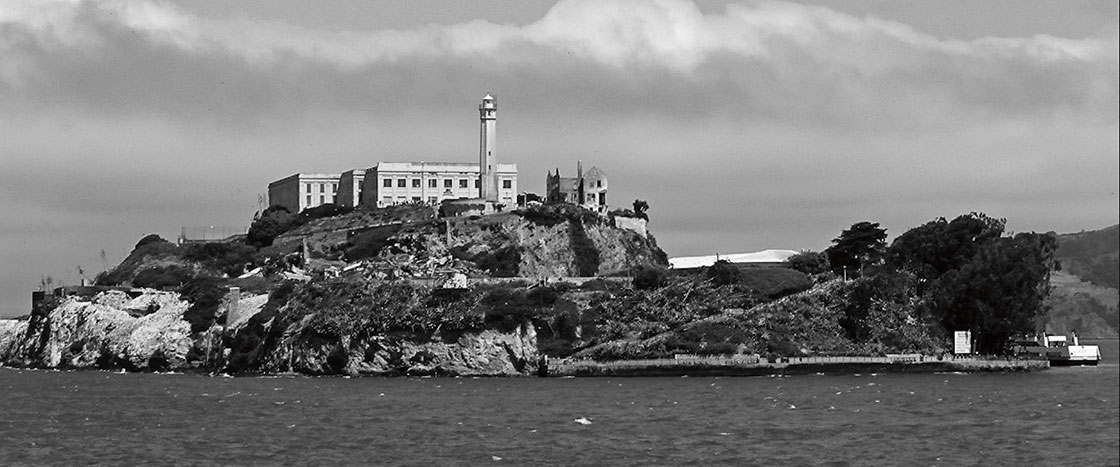At exactly 9:30 on the night of June 11, 1962, the lights at Alcatraz Prison went out. Most of the inmates shivered on their thin, narrow beds as they tried to get some sleep.
But not Frank Morris.
Morris waited for the prison to quiet, his heart pounding. If all went according to plan, he would never sleep behind bars again.
For months, Morris and three other prisoners, Allen West and brothers Clarence and John Anglin, had been secretly plotting to escape from the bleak prison, perched on an island in the middle of San Francisco Bay. People said it was impossible to break free from “the Rock,” as Alcatraz was known. Morris and his friends were desperate to prove everyone wrong.
They had developed an ingenious plan. For months, they had been using tiny tools to chip away at the concrete walls of their cells. Eventually, they made holes big enough to crawl through. Once they had a way out, they climbed up the ventilation shafts behind their cells and set up a secret workshop.
At 9:30 p.m. on June 11, 1962, the lights went out at Alcatraz Prison. Most of the inmates tried to sleep.
But not Frank Morris. Morris waited for the prison to quiet. His heart pounded. If his plan worked, he would never sleep behind bars again.
Morris and three other prisoners planned to escape that night. The other men were Allen West and brothers Clarence and John Anglin. The prison sat on an island in San Francisco Bay. People said that no one could break free from “the Rock,” as it was known. Morris and his friends planned to prove them wrong.
They had made an ingenious plan. For months, they had used tools to chip away at the concrete walls of their cells. Bit by bit, they made holes big enough to crawl through. Once they had a way out, they climbed up the air shafts behind their cells and set up a secret workshop.

